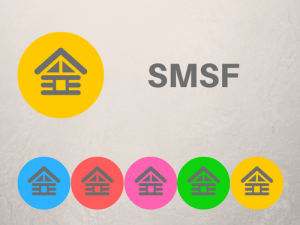Understanding the 5 Key Rules for SMSF: A Comprehensive Guide
Self-Managed Superannuation Funds (SMSFs) have become a popular choice for Australians seeking more control over their retirement savings. However, managing an SMSF comes with a set of responsibilities and regulations that ensure the financial security and integrity of the fund. In this guide, we will delve into the five crucial rules that govern SMSFs, providing a comprehensive overview of these regulations and their significance. What is the 5 rule for SMSF?
What is an SMSF?
Before we explore the rules, it’s important to understand what an SMSF is. A Self-Managed Superannuation Fund is a private superannuation fund established for the sole purpose of providing retirement benefits to its members. Unlike industry or retail superannuation funds, SMSFs are typically managed by individual trustees or a corporate trustee, giving members greater control over their investments.
The 5 Fundamental Rules for SMSFs
1. Sole Purpose Test
The first and most fundamental rule for SMSFs is the Sole Purpose Test. This rule requires that the fund’s primary purpose is to provide retirement benefits for its members. Any investment or decision made by the fund trustees must align with this objective. While SMSFs offer investment flexibility, it’s important to remember that they are not meant for purposes other than retirement savings.

2. The ‘Four Members’ Rule
SMSFs can have a maximum of four members. This rule ensures that the fund remains relatively small and family-oriented, with members typically being related. This limitation promotes accountability and transparency among the members and trustees. A common scenario includes family members pooling their resources and managing the fund collectively.
3. Trustee Structure
The trustee structure of an SMSF is a crucial aspect of its operation. There are two primary trustee structures for SMSFs: individual trustees and corporate trustees. Individual trustees consist of the members themselves, while a corporate trustee is a company specifically established to act as the trustee. Both options have their advantages and disadvantages, and the choice should be made based on the unique circumstances and preferences of the members.
4. Investment Restrictions
SMSFs offer a wide range of investment options, but there are specific limitations and restrictions in place to protect the fund’s assets and members’ retirement savings. Some of the key investment restrictions include:
Prohibited investments, such as personal assets, collectibles, and certain types of property.
The sole purpose of investments must be to generate retirement benefits for members.
All investments must comply with the ‘in-house asset’ rules and not exceed certain thresholds.
It is essential to stay well-informed about these investment restrictions to avoid potential breaches and penalties.
5. Compliance and Reporting
SMSFs are subject to stringent compliance and reporting requirements to maintain their concessional tax status. Trustees are responsible for ensuring the fund complies with these regulations, which include:
Annual audit by an approved SMSF auditor.
Annual return lodgment with the Australian Taxation Office (ATO).
Maintaining accurate financial records and documentation.
Non-compliance with these requirements can result in severe penalties and the potential loss of the fund’s tax benefits.
Why Are These Rules Important?
Understanding and adhering to these five fundamental rules is essential for the successful management of an SMSF. Compliance with these rules ensures that the fund operates within the law, maintains its tax concessions, and ultimately provides financial security for members in retirement. What is the 5 rule for SMSF?
Non-compliance with these rules can lead to the disqualification of the fund, loss of tax benefits, and even civil or criminal penalties for trustees. Therefore, it is imperative for SMSF trustees to stay well-informed and seek professional advice when necessary to ensure they meet their obligations.
Conclusion
Self-Managed Superannuation Funds offer a unique opportunity for Australians to take control of their retirement savings and investment decisions. However, with this control comes the responsibility of adhering to the five fundamental rules that govern SMSFs. The Sole Purpose Test, the ‘Four Members’ Rule, the choice of trustee structure, investment restrictions, and compliance and reporting requirements are all critical aspects that trustees must be aware of and follow.

By understanding and following these rules, SMSF members can ensure their fund remains compliant, maintains its tax concessions, and provides a secure financial future for their retirement. As SMSFs continue to grow in popularity, it is crucial for trustees to be well-informed and seek professional guidance to navigate the complexities of self-managed superannuation effectively. For understanding what SMSF is click this.


